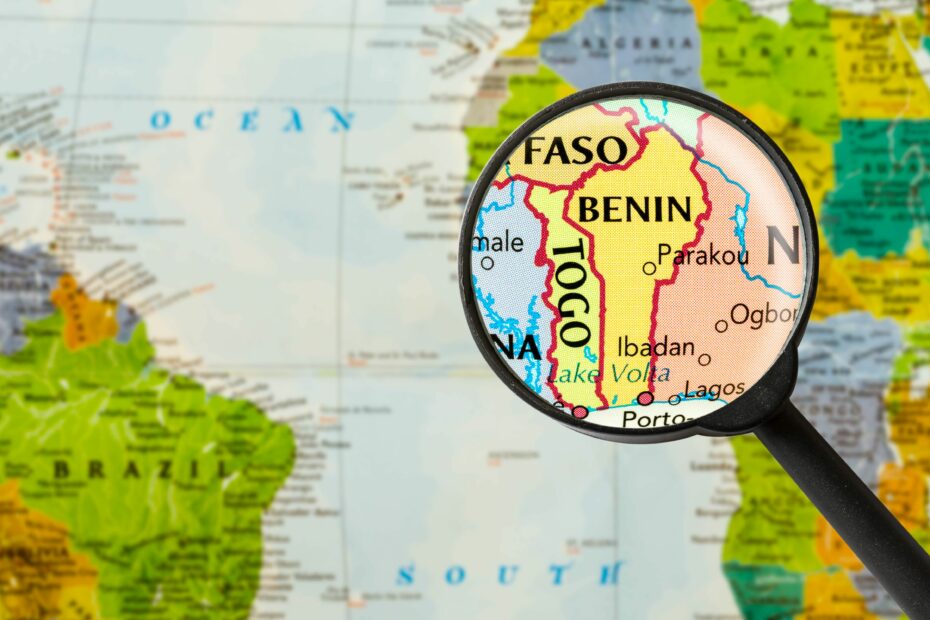Located in the heart of West Africa, Benin is a vibrant nation steeped in many rich traditions and primal history. Often overlooked in favor of its better-known neighbors, this small but mighty country is a treasure trove of unique cultural experiences, stunning landscapes, and unforgettable encounters. The journey through Benin explores its pulsating music, colorful festivals, ancient palaces, and sacred rituals. All these elements make Benin an intriguing destination for those yearning to immerse themselves in authentic African culture. Join us as we delve into the captivating beauty and diversity of Benin.
Geography and Climate
Benin is bordered by Togo to the west, Nigeria to the east, Burkina Faso and Niger to the north, and the Atlantic Ocean to the south. The country boasts a diverse geography, with lush forests in the south, rolling hills in the center, and arid plains. The mighty Ouémé River, the longest in Benin, flows through the heart of the country. Benin’s tropical climate ensures warm temperatures throughout the year, with a rainy season from April to October.
Benin also proudly showcases a diverse geographical landscape that extends from the sandy shores of the Atlantic Ocean in the south up to the arid Sahel in the north. The country is characterized by four main geographical features: the low-lying, sandy coastal plain that houses the capital, Cotonou; the plateaus in the middle of the country, covered with savannas and shrubs; the flat lands dotted with marshes and lagoons; and the Atakora mountains in the northwest. Read Also: Exploring the African Diversity: A Glimpse into Each Nation
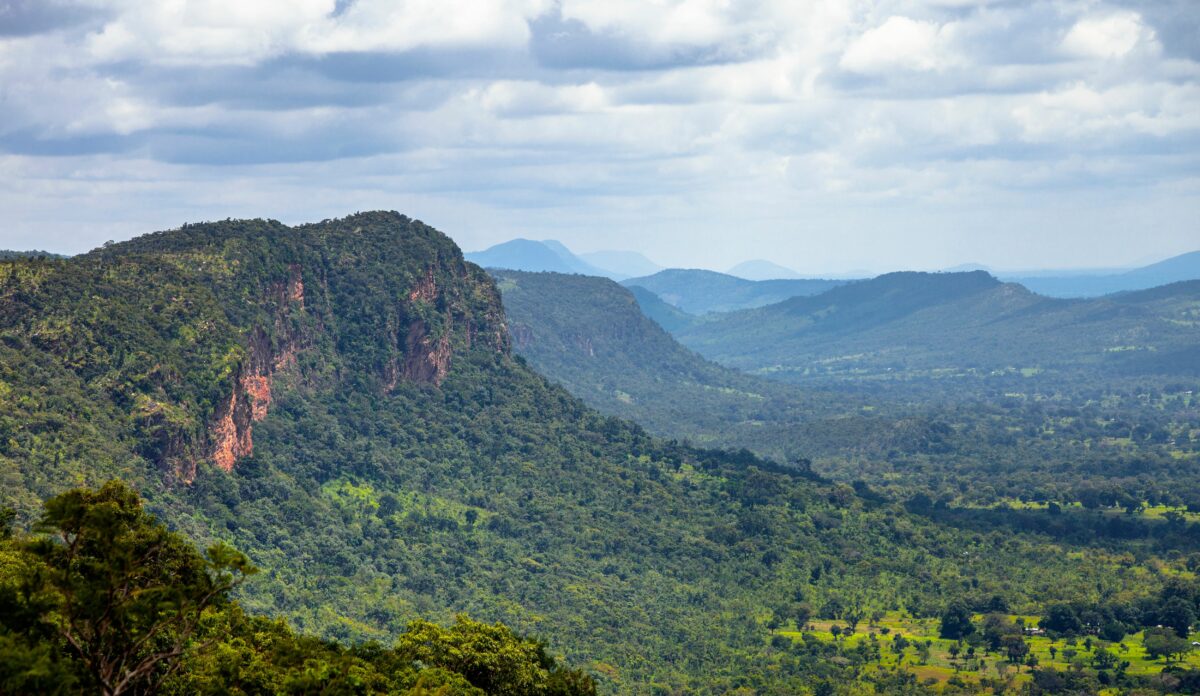
As for the climate, Benin experiences a tropical climate with two distinct seasons – the rainy and the dry season. The south has four seasons: two rainy (April-July and mid-September-November) and two dry seasons, while the north experiences one wet season (May-September) and one dry season. The temperatures typically range from 18°C to 35°C. Similarly, the coastal area is humid, and the north is relatively dry. This climatic variation provides the country with a rich diversity of flora and fauna.
The History of Benin
The history of Benin is marked by periods of illustrious kingdoms, colonial struggle, and the striving for sovereignty. Long before the colonial era, the region was part of several prominent West African kingdoms, including the Dahomey, Yoruba, and Bariba. Dahomey, in particular, is notable for its social organization, including the legendary Dahomey Amazons, a regiment of female warriors.
European contact began in the 15th century with the arrival of Portuguese traders. The slave trade soon followed, with the Dahomey Kingdom becoming a key source of slaves in what was known as the ‘Slave Coast.’ Read Also: 8 African Countries at the Forefront of Climate Awareness
The French colonized the region in the late 19th century, and Dahomey became part of French West Africa. The colonial period was marked by economic exploitation and French culture and language imposition.
Benin gained independence from France on August 1, 1960, initially as the Republic of Dahomey. The post-colonial period was marked by political instability and military coups. In 1975, the country was renamed the People’s Republic of Benin, marking the start of a Marxist-Leninist government.
In 1990, Benin transitioned to a democratic government, becoming one of the first African nations to make such a transition successfully. Today, the Republic of Benin stands as a symbol of Africa’s historical richness and resilience.
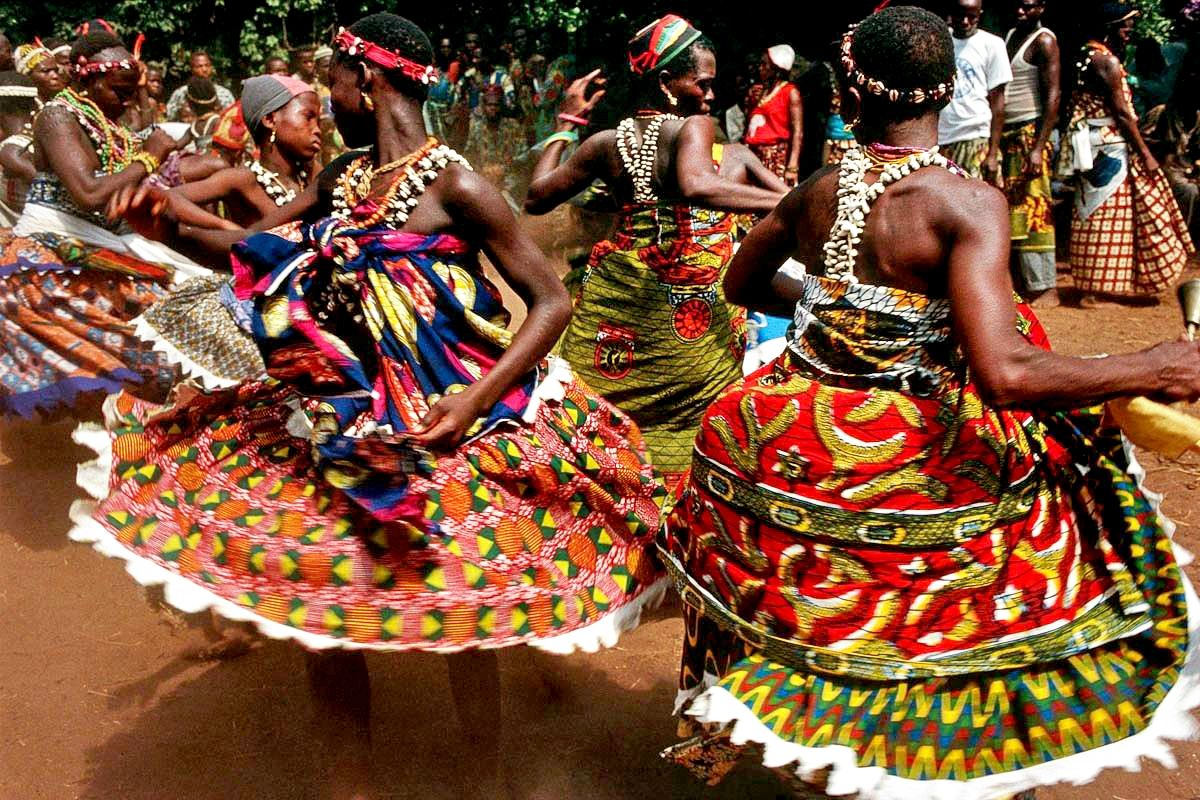
Culture and Traditions
Benin’s culture is a vibrant blend of innumerable tribal customs and traditions, reflected in the country’s music, art, and cuisine. Music is central to Benin’s cultural expression, characterized by diverse styles ranging from traditional folk tunes to modern Afropop. The rhythm of the drums is a common thread, weaving a rich tapestry of sound that resonates with Benin’s heritage.
Art also holds a significant place within Benin’s culture. The country is renowned for its bronze sculptures, wood carvings, and vibrant textiles, each echoing the stories and traditions of its people. Moreover, traditional artisans employ centuries-old techniques to craft these stunning works, preserving their heritage and offering a unique insight into Benin’s cultural landscape.
Benin’s myriad of tribal groups each have their own unique customs and rituals, but collective community life, respect for elders, and vibrant festivals are universal aspects of the social fabric. The Vodun (Voodoo) religion, originating from Benin and practiced by a significant portion of the population, contributes greatly to the cultural and spiritual identity of the country.
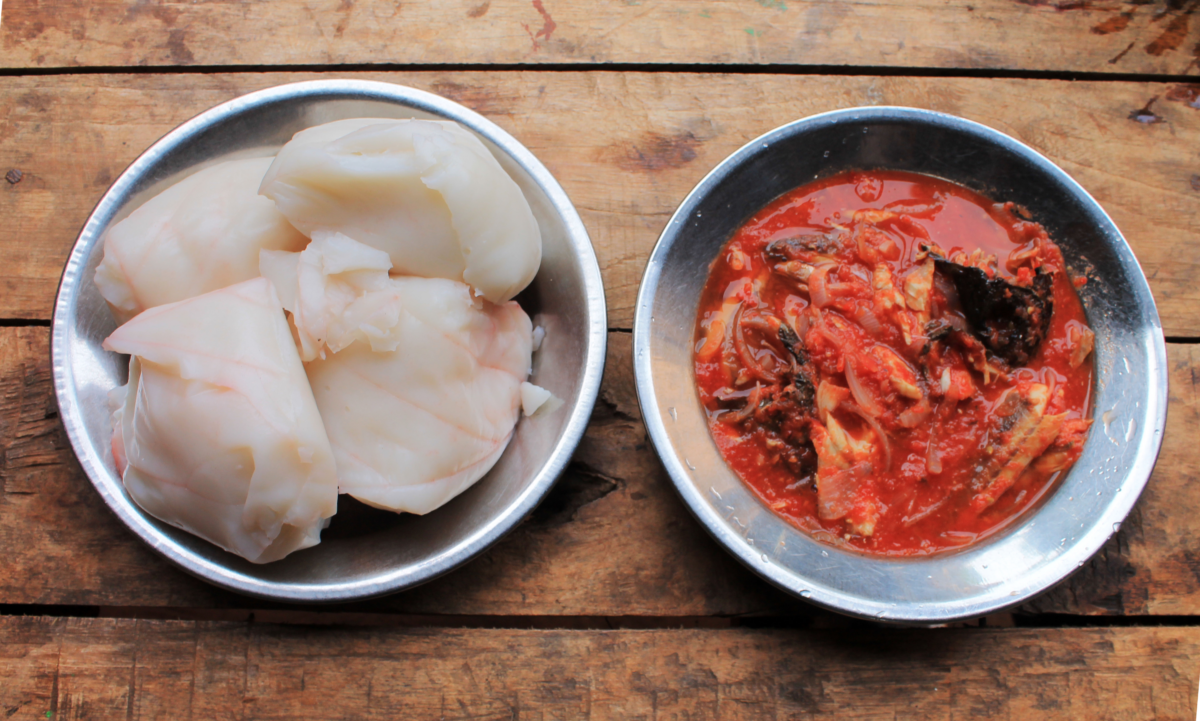
Food and Cuisine
Benin’s diverse cuisine mirrors its rich cultural tapestry and agricultural variety. Core elements like corn, beans, yams, cassava, and plantains form the basis of many dishes, often paired with flavorful sauces and stews. ‘Pâte,’ a dough-like meal from corn or yam flour, is a popular choice, usually accompanied by ‘Sauce,’ a spicy tomato-based stew with meat or fish.
Another favorite, ‘Akassa,’ features fermented corn dough with a zesty sauce or soup. Street food, a hit among locals and tourists, includes ‘Akara,’ deep-fried bean balls, and ‘Alloco,’ fried plantains. Beyond mere sustenance, Benin’s cuisine serves as a unifying force and a guardian of the nation’s cultural heritage.
Beninese culinary delights result from a fusion of flavors influenced by local ingredients and traditional cooking methods. Yams, maize, cassava, and plantains are staples that contribute to creating delectable dishes like “Poulet Yassa” (marinated chicken), “Akpan” (cornmeal porridge), and “Fufu” (pounded yam). Finally, the national dish, “Aloco,” featuring fried plantains paired with spicy sauces, is a must-try, showcasing the essence of Benin’s gastronomic experience.
Economy and Industries
Benin’s economy is primarily based on agriculture, trade, and the informal re-export and transit trade sector. Cotton, a major cash crop, forms the backbone of the agrarian economy, contributing significantly to export earnings. Other important agricultural products include corn, beans, rice, peanuts, cashews, shea nuts, palm oil, yams, cassava, coffee, pineapples, and livestock. The informal sector thrives with small-scale subsistence farming and re-export trade with Nigeria.
The industrial sector of Benin, although less developed, is steadily growing, with industries focusing on textiles, food processing, construction materials, and cement. The country also harbors potential in the mining sector, particularly gold, limestone, and marble.
Benin’s service sector is largely dominated by tourism, banking, and communications. Cotonou is a significant regional transportation hub, serving as a conduit for goods flowing to landlocked countries in West Africa.
Overall, the government of Benin has been implementing strategic measures to enhance economic growth. This includes infrastructure development, public sector reform, and fostering a conducive environment for private investment. These initiatives equally aim to ensure economic stability and sustainable development for the nation.
Tourism Attractions
Benin is rich in cultural and natural tourist attractions that appeal to many visitors. Its historical sites are a testament to the grandeur of the ancient Kingdom of Dahomey and are recognized as a UNESCO World Heritage Site. In Ouidah, the Route des Esclaves bears significant historical importance, marking the path slaves walked before being shipped overseas. The Ouidah Museum of History also hosts artifacts and exhibits that provide insight into the trans-Atlantic slave trade.
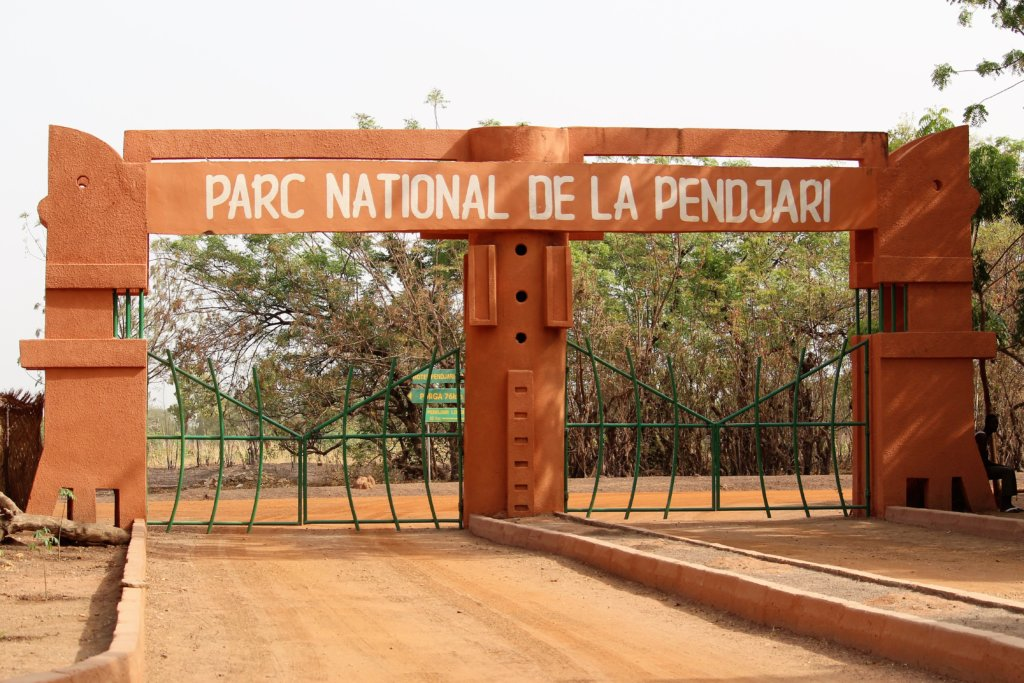
For nature lovers, the Pendjari National Park is a must-visit. Known for its wildlife, the park is home to elephants, cheetahs, and West Africa’s largest population of lions. The park’s diverse landscapes, from savanna to rocky cliffs, offer an unforgettable safari experience.
Benin also boasts beautiful beach destinations like the Grand Popo with its long stretch of palm-fringed coastline. For a more spiritual experience, the Temple of the Sacred Python in Ouidah, one of the major Vodun (Voodoo) sanctuaries, provides visitors with a unique glimpse into the country’s traditional religious practices.
The Route des Pêches, an idyllic coastal road, is a delightful destination for those seeking a blend of picturesque landscapes and authentic cultural interactions. Cotonou, the economic capital, is a vibrant city with lively markets and, a rich arts scene and is home to the impressive Cotonou Cathedral and Foundation Zinsou, a modern art museum. The Door of No Return in Ouidah, a significant landmark of the Atlantic slave trade, provides a poignant reminder of Benin’s somber history.
Bottom Line
Benin offers a unique and diverse travel experience for visitors. The country has something for everyone, from its rich cultural heritage to its stunning natural landscapes. Whether exploring historic sites like the Royal Palaces of Abomey or immersing oneself in nature at Pendjari National Park, Benin will leave a lasting impression on all who visit. So pack your bags and prepare for an unforgettable journey through the heart of West Africa in beautiful Benin.

